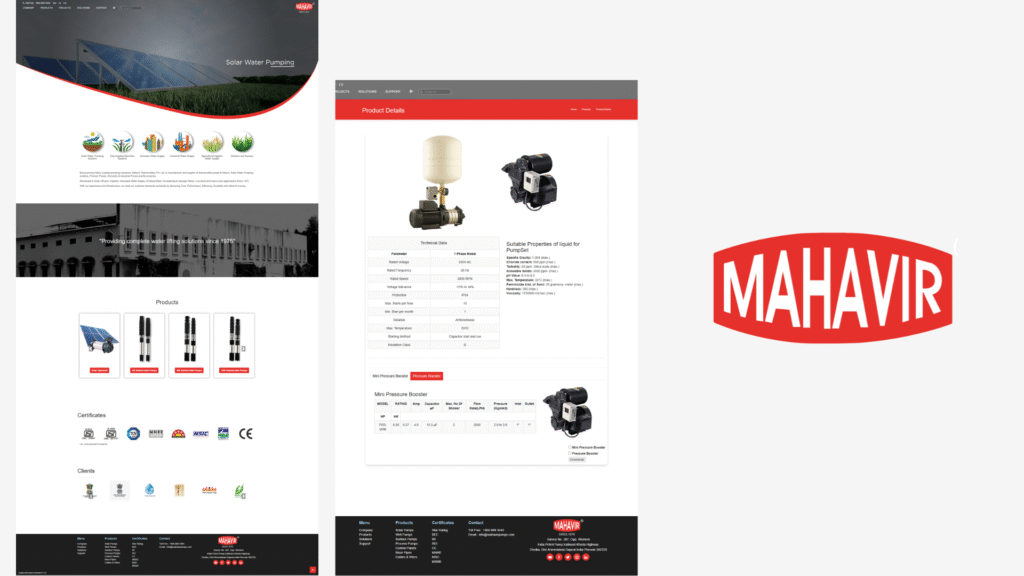How IT Solutions Improve Efficiency in Manufacturing
In today’s competitive marketplace, manufacturers must leverage every advantage to stay ahead. One of the most transformative forces driving this evolution is the integration of IT solutions. By streamlining complex processes and reducing downtime, IT innovations are redefining how manufacturing operations run. From automation to real-time data analytics, these technologies enable businesses to produce higher-quality products faster and more cost-effectively. In this article, we’ll explore how IT solutions improve efficiency in manufacturing and why embracing them is essential for future growth.
Understanding the Role of IT in Modern Manufacturing
Manufacturing is no longer just about machines and raw materials; it’s deeply intertwined with information technology. IT solutions provide critical support across multiple facets such as supply chain management, production quality control, and workforce collaboration. By embedding digital tools into traditional manufacturing frameworks, companies unlock the ability to monitor, analyze, and adjust operations dynamically.
For example, Enterprise Resource Planning (ERP) systems integrate various departments, ensuring seamless communication from procurement to delivery. Similarly, Manufacturing Execution Systems (MES) monitor production in real time, reducing waste and speeding up delivery.
Key IT Components in Manufacturing
- Industrial IoT (IIoT): Sensors and smart devices that capture machine and process data for actionable insights.
- Big Data Analytics: Processing large volumes of data to optimize decision-making and predict maintenance needs.
- Automation Software: Robotics and automation platforms that reduce human error and increase throughput.
- Cloud Computing: Flexible infrastructure that supports data sharing and remote monitoring worldwide.
How IT Solutions Improve Efficiency in Manufacturing
Manufacturing efficiency hinges on minimizing downtime, improving quality, and optimizing resource use. Here’s how IT solutions contribute to these goals.
1. Streamlining Production Processes with Automation
Automation transforms labor-intensive manufacturing workflows into highly efficient, standardized operations. IT-driven automation systems, such as programmable logic controllers (PLCs) and robotic arms, execute repetitive tasks with precision and speed. This not only reduces human error but also unlocks scalability.
Consider a production line where robots handle assembly and packaging. The software controlling these robots can be updated with new instructions instantly, allowing quick adaptation to changes in product design or demand.
Furthermore, automation software often integrates with MES to provide real-time visibility into production status, ensuring issues are detected and resolved promptly—keeping downtime minimal.
2. Enhancing Predictive Maintenance via Data Analytics
Unexpected machinery breakdowns can cripple manufacturing efficiency. IT-enabled predictive maintenance uses sensor data collected from equipment to forecast failures before they occur.
By analyzing trends and anomalies in parameters like vibration, temperature, and pressure, maintenance teams can intervene proactively. This approach reduces costly unplanned downtime and extends the life of machinery.
# Example: Simple Python snippet to detect anomaly thresholds
def check_machine_health(sensor_readings, threshold=75):
for reading in sensor_readings:
if reading > threshold:
return "Alert: Maintenance Required"
return "Machine Operating Normally"
sensor_data = [70, 72, 69, 80, 74]
status = check_machine_health(sensor_data)
print(status) # Output: Alert: Maintenance Required
3. Improving Supply Chain and Inventory Management
IT solutions vastly improve how manufacturers source components and manage inventory. ERP software connected to suppliers’ systems enables just-in-time inventory, reducing excess stock and storage costs.
Additionally, technologies like blockchain can add transparency and traceability to supply chains, ensuring compliance and reducing risks associated with counterfeit parts or delays.
Manufacturers using data-driven supply chain management can better forecast demand fluctuations, ensuring raw materials are available when needed without overstocking.
4. Facilitating Real-Time Decision Making
Data from factory floor sensors, supply chain systems, and machinery can be aggregated into dashboards providing comprehensive, real-time insights. Managers can quickly identify bottlenecks, quality issues, or inefficiencies and respond promptly—often before they impact production.
For instance, a sudden slowdown detected in an assembly line can trigger alerts to supervisors, who might adjust workflows, increase workforce, or deploy maintenance teams instantly.
These data-driven approaches eliminate guesswork and empower leadership to optimize operations proactively.
Case Studies: Real-World Impacts of IT in Manufacturing
Smart Factory Transformation at Bosch
Bosch implemented an Industry 4.0 approach incorporating IoT sensors, big data analytics, and automation across its manufacturing plants. The integration led to:
- 30% reduction in machine downtime
- 20% increase in production throughput
- Improved quality control with real-time defect detection
This transformation showcases how comprehensive IT strategies can yield measurable efficiency gains across complex operations.
Predictive Maintenance Success at General Electric
General Electric (GE) developed a predictive maintenance platform for its aviation and energy divisions. Utilizing data from embedded sensors and AI-driven analytics, their plants improved equipment uptime significantly.
The result was a decrease in maintenance costs by 10-15% and minimized production disruptions, illustrating how data estimation models directly contribute to operational efficiency.
Challenges and Considerations When Implementing IT Solutions
Despite the promising benefits, manufacturers must carefully plan IT solution deployment. Some challenges include:
- Integration Complexity: Legacy equipment might not easily connect to modern IT systems requiring middleware or upgrades.
- Data Security: Increased connectivity exposes manufacturing systems to cybersecurity threats that could disrupt operations.
- Employee Training: Staff need adequate training to use new software and interpret data effectively.
- Cost and ROI Assessment: Upfront costs for IT solutions can be significant; businesses must evaluate expected efficiency gains carefully.
Addressing these challenges through phased implementation, vendor partnerships, and ongoing training ensures smoother transitions and maximizes the benefits of IT integration.
Future Trends: What’s Next in IT-Driven Manufacturing Efficiency?
Emerging technologies promise to push efficiency even further. Key developments to watch include:
- Artificial Intelligence (AI): AI-powered optimization will provide deeper insights and automated decision-making across operations.
- Digital Twins: Virtual replicas of physical assets allow simulation and analysis before real-world implementation.
- 5G Connectivity: High-speed, low-latency communication facilitates instant data exchange and remote control.
- Augmented Reality (AR): AR can assist workers in maintenance and training, reducing errors and improving speed.
Integrating these technologies with existing IT infrastructure will continue to revolutionize manufacturing processes, driving productivity to unprecedented levels.
Conclusion
The question of how IT solutions improve efficiency in manufacturing is answered by their ability to optimize workflows, enable predictive maintenance, streamline supply chains, and empower real-time decisions. Modern IT tools—from automation software to IoT sensors and analytics platforms—transform manufacturing into a smarter, faster, and more agile industry.
While challenges exist, strategic adoption of IT solutions presents a clear pathway to enhanced productivity and competitiveness. As manufacturers embrace digital transformation, those who leverage these technologies effectively will lead the next wave of industrial innovation.
Ready to explore how IT can revolutionize your manufacturing efficiency? Start with small pilot projects and scale as you unlock data-backed insights and operational gains.



